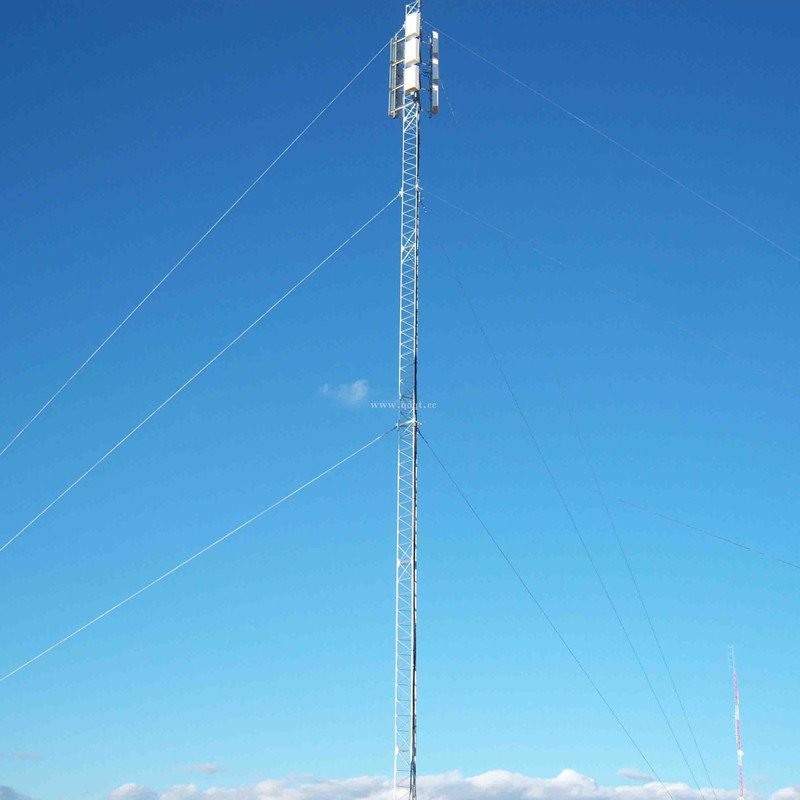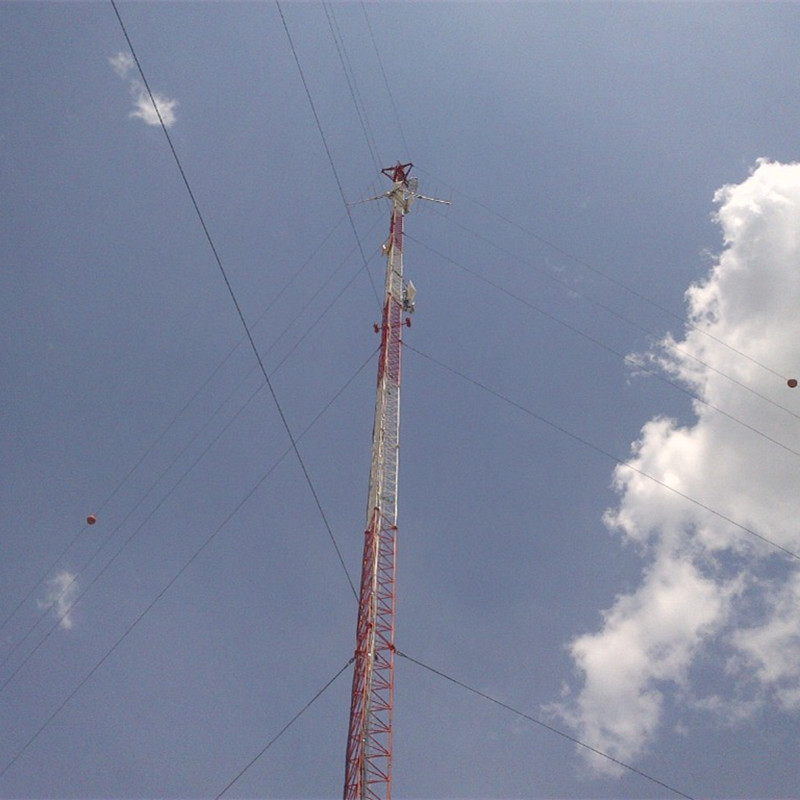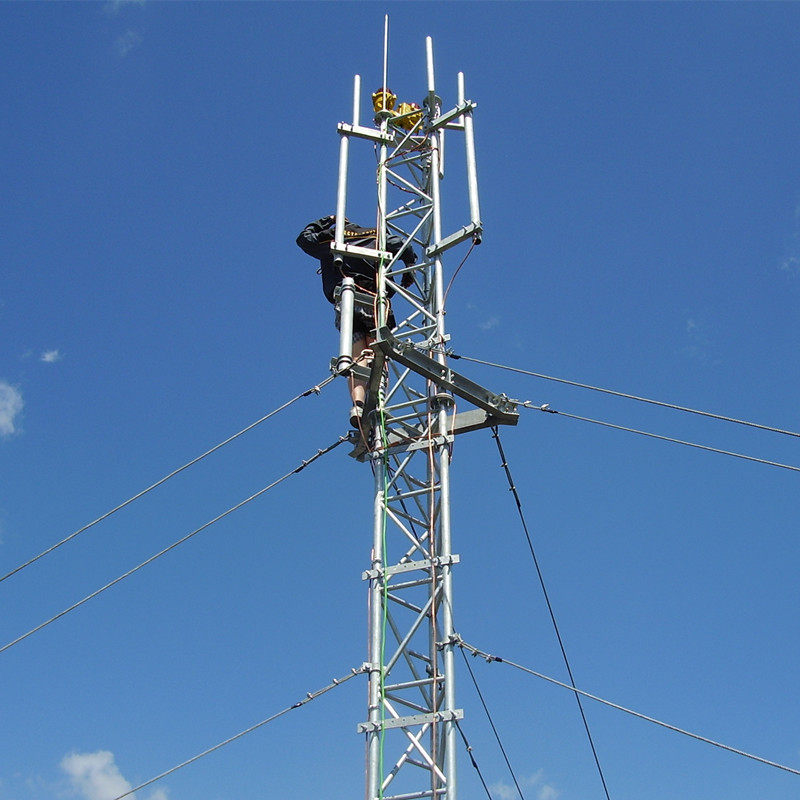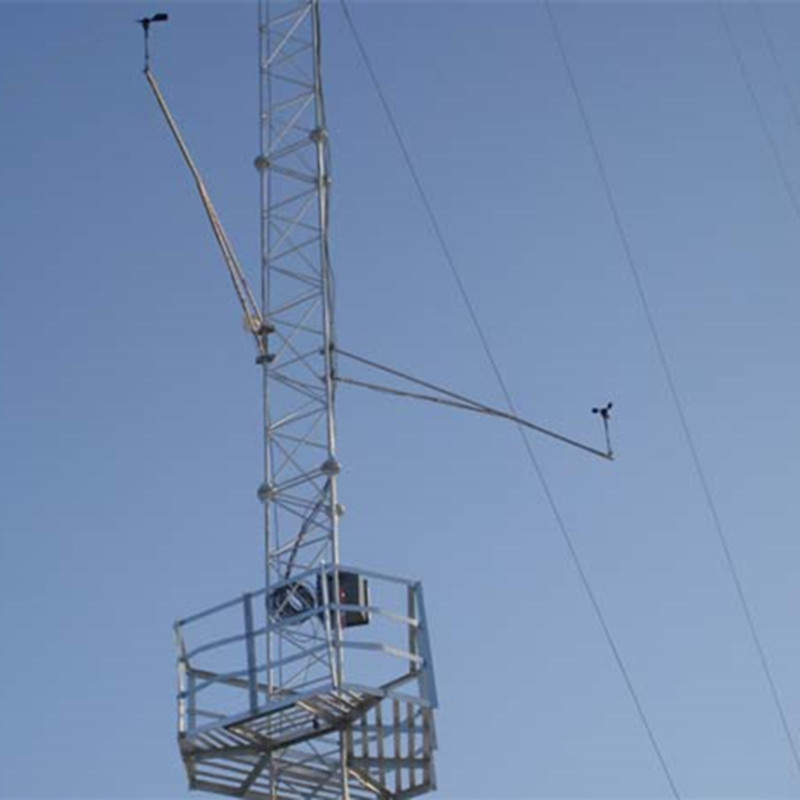Meteorological evaluation towers (MET)
Meteorological evaluation towers (MET)
Wind measurement tower consists of tower base (1), tower (2), crossbar, diagonal rod (3), anemometer bracket (4), lightning rod and cable for observation of near-surface air movement , recorded tower structures. It was previously built by meteorological and environmental protection departments for meteorological observations and atmospheric environmental monitoring.
In recent years, with the global attention to wind energy resources and the rapid development of the wind power industry, governments, enterprises or wind power developers have begun to invest in the construction of Wind measurement tower to obtain first-hand wind energy data for future investment in wind farm investment.
|
Product Details |
||
|
Height |
5-200M |
|
|
Wind Speed |
30M/S(Different In Different Regions) |
|
|
Main Material |
Angle Steel |
|
|
Ice Coating |
5mm—7mm(Different In Different Regions) |
|
|
Earthquake Intensity |
8° |
|
|
Optimal Temperature |
-35°C To 45°C |
|
|
Vertical Deviation |
<1/1000 |
|
|
Delivery Time |
30 Days after receiving 30% Deposit |
|
|
Preservative Treatment |
Hot Dipped Galvanized For All Tower Steel Members, Guarantee Against Rusting For 50 Years |
|
|
Main Function |
Supporting For Signal Transmission, Bracing for The Signal Transmitting Antenna |
|
|
Carried Standard |
The Steel Materials, Hot Dip Galvanization, Bolts Standard Is Conforming To The Relevant Chinese National Standards and Equivalent as ASTM Standards, BSEN Standards, or ISO Standards |
|
|
Brief Features |
Microwave Communication Towers are usually built on the ground, roof, summit, strong bearing capacity of the wind. Angle Steel are main material used in tower structures, including some steel plate. The structures can be also composed by steel tube only. Each section of the tower frame shall be connected by bolts. All tower structure shall be hot dipped galvanized after fabrication. Angle Steel Tower shall be composed by tower boots, tower body, lightning rod, platform, climbing ladder, antennas brackets, feeder panel and lightning deflectors. |
|
The Wind measurement tower is installed in the wind farm site, mostly truss structure and cylindrical structure. It is strengthened by steel strands and is generally 10 to 150 meters in height. Anemometers, wind vanes, and monitoring equipment such as temperature and air pressure are installed at different heights of the tower body. The site wind conditions are continuously monitored 24 hours a day, and the measurement data is recorded and stored in a data logger mounted on the tower.
Wind measurement tower structure design: Common Wind measurement tower structure forms are self-standing and pull-wire. The self-standing Wind measurement tower has a wide lower part, a relatively large amount of tower material, and a higher requirement for the foundation; the Wind Measurement tower has a relatively reasonable force, high reliability, small tower section and small amount of tower material. However, the number of pull lines is large and the construction process is complicated.
The Wind measurement tower can be constructed in the form of a single steel tube, a triangular truss and a quadrilateral truss. The diameter of the steel pipe required for the single steel pipe structure is large, the windward area is also large, and the material quantity is large; the triangular truss structure is relatively stable, the tower is less affected by wind load, and the most economical; the quadrilateral truss structure is relatively stable, generally When the triangular truss cannot meet the requirements of force and deformation or is uneconomical, the tower can be in the form of a quadrilateral truss structure.
The main functions of Wind Measurement tower: environmental monitoring, wind, air pressure, humidity and other resource data collection. Support for the installation of the corresponding equipment.
Applicable units: power plant pre-planning, island wind measurement, meteorological data collection, environmental monitoring and other departments.
Advantages: small wind load coefficient and strong wind resistance. The tower body has a small wind blocking area, which is conducive to accurate and objective data collection, and minimizes the gap between measured data and actual data. The collecting tower column is connected by an outer flange, the bolt is pulled, not easy to be damaged, and the steel strand is reinforced. The tower is arranged in a triangular shape, which saves steel, keeps small, covers a small area, saves land resources, and has low cost (only 1/3 or less of the angle steel self-supporting tower). The location is convenient. The tower body is light and heavy, transportation The installation is convenient and the construction period is short. The tower type is designed with the wind load curve changing, the lines are smooth, it is not easy to collapse in case of rare wind disaster, and the safety factor is high. The design conforms to the national steel structure design specification and the tower design rule, and the structure is safe and reliable.
Implementation Standard: Wind Farm Wind Energy Resource Measurement Method (GB/T 18709-2002)
Wind resistance: maximum wind resistance of 60 m / s; seismic intensity: 8 degrees
Design weight: 〉1 ton (the specific weight depends on the region, the western region, the coastal windy area and the central region are slightly different.
Wind measurement data is used to conduct wind resource assessments and investment outlook projections.
Grounding resistance: ≤ 4Ω.meteorological evaluation towers (MET)





- Pre:Telecommunication Bionic Tower 2019/1/25
- Next:Galvanized steel structure guy 2019/1/24
